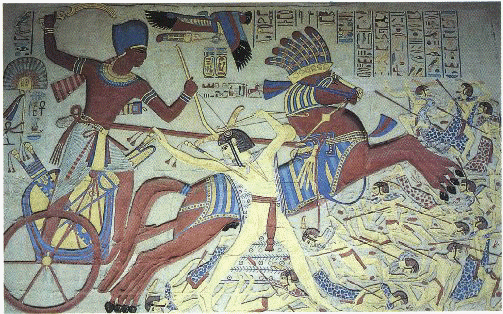
Throughout Pharaonic history, Egypt's immediate neighbours to the west, the Libyans, were often a nuisance, necessitating minor campaigns by the Pharaohs, but there is nothing to suggest that they were ever a serious threat to the country's security. However, with the reign of Seti I in the New Kingdom, Egypt found itself under unprecedented pressure from the west, a result of hostility from new groups who appear in the Egyptian records of the period. These were the Rebu and Meshwesh, two previously little known Libyan "tribes", and the mysterious foreigners, the "Sea Peoples". This aggression culminated in large-scale invasions during the reigns of Merenptah and Ramesses III.

On the basis of certain fragmentary remains discovered along Egypt's Mediterranean coast in the first half of the 20th century, a number of scholars proposed the existence of a chain of fortresses intended to counteract this hostility from the west, probably founded or strengthened by Ramesses II as Egypt became aware of the growing threat. It has generally been envisaged that this was similar in nature to the contemporary "Ways of Horus" fortress system across northern Sinai (click here for map or here for more details). At one time or another, at least sixteen sites have been suggested as composing this chain. These are shown on the map below:

It is upon a mixture of textual and archaeological evidence that the existence of this chain of fortresses has been established. However, as this evidence is reviewed below, we shall see that is far from conclusive and in fact only two fortress sites have been identified with any certainty, these being Zawiyet Umm el-Rakham and Kom el-Abqa'in.